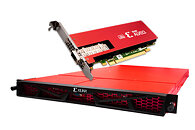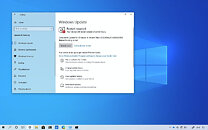
Researchers Use SiFive's RISC-V SoC to Build a Supercomputer
Researchers from Università di Bologna and CINECA, the largest supercomputing center in Italy, have been playing with the concept of developing a RISC-V supercomputer. The team has laid the grounds for the first-ever implementation that demonstrates the capability of the relatively novel ISA to run high-performance computing. To create a supercomputer, you need pieces of hardware that seem like Lego building blocks. Those are called clusters, made from a motherboard, processor, memory, and storage. Italian researchers decided to try and use something different than Intel/AMD solution to the problem and use a processor based on RISC-V ISA. Using SiFive's Freedom U740 SoC as the base, researchers named their RISC-V cluster "Monte Cimone."
Monte Cimone features four dual-board servers, each in a 1U form factor. Each board has a SiFive's Freedom U740 SoC with four U74 cores running up to 1.4 GHz and one S7 management core. In total, eight nodes combine for a total of 32 RISC-V cores. Paired with 16 GB of 64-bit DDR4 memory operating at 1866s MT/s, PCIe Gen 3 x8 bus running at 7.8 GB/s, one gigabit Ethernet port, USB 3.2 Gen 1 interfaces, the system is powered by two 250 Watt PSUs to support future expansion and addition of accelerator cards.
Monte Cimone features four dual-board servers, each in a 1U form factor. Each board has a SiFive's Freedom U740 SoC with four U74 cores running up to 1.4 GHz and one S7 management core. In total, eight nodes combine for a total of 32 RISC-V cores. Paired with 16 GB of 64-bit DDR4 memory operating at 1866s MT/s, PCIe Gen 3 x8 bus running at 7.8 GB/s, one gigabit Ethernet port, USB 3.2 Gen 1 interfaces, the system is powered by two 250 Watt PSUs to support future expansion and addition of accelerator cards.




























































